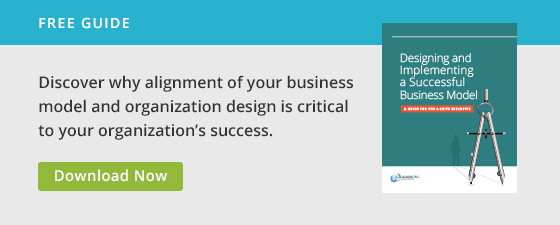In a recent post, we addressed the topic of linkages within an organization. Linkages, or informal relationships within an organization, make up the organization’s “unseen,” informal structure: how people relate to and work with each other across organizational boundaries. Linkages often have as much or even more impact on organizational alignment and the way an organization functions and delivers value than the formal structures and hierarchies do. Because of this, executives should be aware of the linkages within their organizations, and keep an eye out for ways to leverage them to the fullest.
One form of linkage is a community of practice: a group of people who are drawn together by a common interest or purpose of some kind. Communities of practice form within a company when the organization needs a means of coordinating decisions, correcting issues or connecting talent across organizational boundaries. They may grow up around:
- Disciplines. For example, it’s not uncommon for engineering communities of practice to form in which people interested in similar technical topics come together to discuss their projects and share talent, techniques and ideas.
- Issues. If a company is having problems with a particular issue, groups and individuals from various functions within an organization may be mobilized to come together to help resolve it. For instance, poor customer service can have a multitude of causes, and the community of practice can help identify and mobilize efforts for improvement (e.g., the way a product is designed, the way marketing materials tell a story, the practices HR uses to hire talent and so forth).
- Decision making. A community of practice may grow up around the need to set standards and policies or around other important decisions impacting an organization. For instance, a company that has grown through acquisition will need to reconcile differences in culture, policy, and work flow across organizational boundaries.
Intentionally Designing Communities of Practice for Organizational Alignment
Communities of practice can be intentionally set up, or they may form spontaneously in response to changes and needs within an organization. When a beneficial community of practice is identified, leaders should consider how best to empower and leverage it. For example, if the community of practice is going to recommend policies, what exactly is it permitted—or not permitted—to do?
Just as a formal structure is designed with roles, hierarchy, decision rights, and work processes, the same must be done for a community of practice. Asking the following questions can help leaders make decisions around communities of purpose to define them and help them to grow in ways that align with the organization’s goals:
- What is the purpose/mission of the community?
- What other means or mechanisms could be used to address the need besides a community of practice?
- What are the processes of the community (e.g., how is work prioritized, how are decisions made, etc.)
- What definitions are needed about roles, decision rights, participation expectations, etc.?
- What indicators will suggest whether the community is fulfilling its purpose(s)?
- What skills sets or experience is needed in the community to make the best decisions?
- How will the life cycle of the community be managed (start-up, development, and wind-up)?
- How will the right culture be created in the community to achieve positive outcomes and encourage full engagement?
If these questions remain unanswered, the community of practice may lack teeth and participants may opt out of participating over time. Common red flags that this is happening include feedback like: “I can’t make decisions, so why bother?” “I don’t know what our purpose is,” or “We don’t get anything done.”
When Communities of Practice Fail
A viable community of practice will have a clear, distinct purpose that supports organizational alignment. If this is not present, people will still gather if they see a personal benefit. In the absence of either personal benefit or compelling purpose a community of practice will dissipate. Some common reasons for them to dissolve include:
- They are misused. We have seen organizations set up communities of practice to circumvent the formal structure when they don’t have the courage to admit that their existing structure and/or leadership isn’t delivering. Communities of practice are no replacement for a solid formal structure, and an organization that does this will eventually have to do the necessary corrective work.
- Their authority is withheld. Under-resourcing a community of practice and/or not giving it the accountability it needs to accomplish its purpose will limit its ability to function, regardless of the big expectations that might be placed on it. This can happen when leaders are unclear on the role the community of practice is expected to play.
- They have outlived their purpose. We sometimes see organizations fail to routinely revisit the need for and purpose of their communities of practice. For example, if your company grew through acquisition three years ago, do you still need the community that was set up to ease that transition? Communities lasting longer than their intended purpose often start looking for work or making up new issues to tackle which they weren’t designed to do.
Communities of practice can provide an excellent means of addressing issues within an organization that its formal structure is not equipped to handle; however, they must be properly established and managed. Leaders should consider how targeted communities of practice can help enable strategic objectives and key business issues. Where beneficial, they should be encouraged and empowered; where they are not fully aligned with the organization’s goals, it may be best to dissolve them or look for more viable linkage alternatives.






